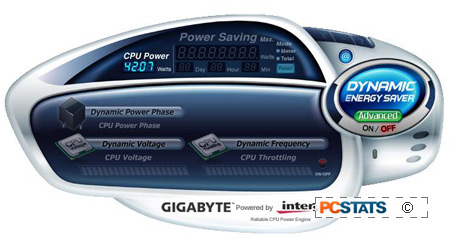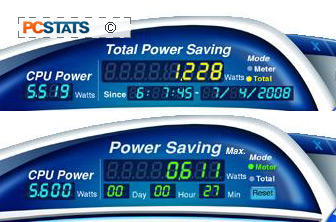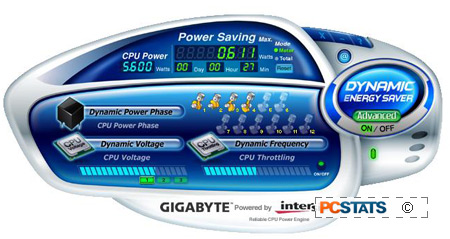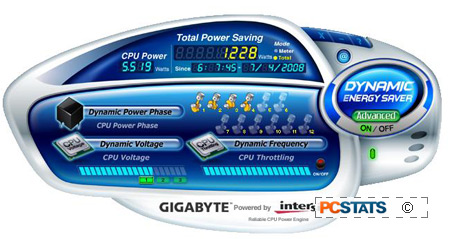 Computer power consumption is just one more area where
there is room for making things more energy efficient. Particularly as the
number of computers per household continues to rise, not to mention the
exponential leaps in computer use world wide.... Modern computer systems with
multi-core CPUs and multi-GPU videocards have forced power draw up pretty high,
but thanks to the "Green Revolution" motherboard makers are starting to offer
board-level power-saving and power efficiency features. The Gigabyte
EP45-DQ6 is no exception. With it Gigabyte package a little something called
Dynamic Energy Saver Advanced technology, and although the savings are still minor it's
worth flicking on.
Computer power consumption is just one more area where
there is room for making things more energy efficient. Particularly as the
number of computers per household continues to rise, not to mention the
exponential leaps in computer use world wide.... Modern computer systems with
multi-core CPUs and multi-GPU videocards have forced power draw up pretty high,
but thanks to the "Green Revolution" motherboard makers are starting to offer
board-level power-saving and power efficiency features. The Gigabyte
EP45-DQ6 is no exception. With it Gigabyte package a little something called
Dynamic Energy Saver Advanced technology, and although the savings are still minor it's
worth flicking on.
Dynamic Energy Saver technology works on several
fronts, but most significantly by adjusting the amount of power phases used to keep the
CPU operating. Depending on the processor's load at any given moment, some or
most of the motherboard power phases can be disabled to reduce total system
power draw. ASUS have similar technology which uses a two-step process to keep either half or all
the power phases on at any given time. Gigabyte's Dynamic Energy Saver has the ability
to activate power phases incrementally, and turn them off when they're not being
used.
 PCSTATS tested Gigabyte's Dynamic Energy
Saver software on the EP45-DQ6 motherboard to see just what it
can do, but first lets take a closer look at what it offers up.
PCSTATS tested Gigabyte's Dynamic Energy
Saver software on the EP45-DQ6 motherboard to see just what it
can do, but first lets take a closer look at what it offers up.
The Dynamic Energy Saver tool rests in
the system tray once the software is installed. The main window displays
current CPU power consumption in Watts (here at 42.07W) care of an Intersil PWM
chip that doubles as a power meter. The user has full control over DES, it can be turned on
or off with the flick of a switch. In situations where you need the full
power of your computer, say for gaming or really intensive applications you can
easily disable DES by turning it off.
The power meter monitors
moment-to-moment CPU power consumption, whether DES is on or turned off. Here's the CPU power
when the computer is idle, it's drawing about 5.5W. Under load the CPU
power draw jumps up to around 42W.

When enabled, DES displays several points of
information: Cumulative Watts of power saved, and current Watts being saved with
DES on vs. the tool not being used. The two
other configurable options within the system are Dynamic Voltage (three levels) and
Dynamic Frequency (on/off). Dynamic Frequency is basically CPU throttling by underclocking - a
method used on laptops for many years to improve battery life.
The Dynamic Power Phases are represented by twelve little
engines, which blank out as they are dynamically turned off, if unnecessary. On the EP45-DQ6 motherboard a string of LED lights
go on or off to indicate how many CPU power phases are
turned off.

Pairing the metered mode together with Prime 95 running
in the background gives a quick glimpse at what Gigabyte's Dynamic
Energy Saver can do. With all power savings turned to their minimums
and the processor Dynamic Frequency adjustment off, the system was run for
five minutes under heavy load. The power saving meter reported were a mere 0.2W
saved. The same test was repeated with power saving features flipped to the
maximum settings, and after five minutes of Prime 95 testing the Gigabyte
software reported a 0.43W savings. It's not much, but if we multiply that
by a year the power savings add up.

DES Advanced does support power phase switching even when
the motherboard is being overclocked, although we fail to see the point of
overclocking and power saving features being blended together.
